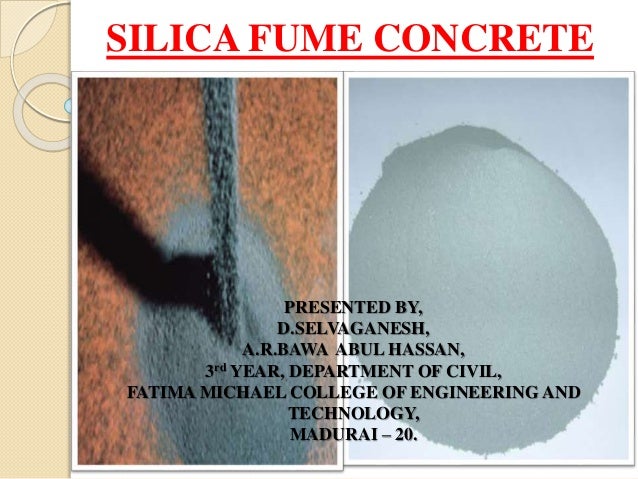
Companies that produce ferrosilicon have come up with an industrial byproduct known as SF (Silica Fume). It is an admixture of reactive mineral that is quite amorphous and fine.
Calcium Hydroxide is an outcome of cement hydration, which reacts with the Silica Fume proactively.
Concrete of advanced mechanical strength is the outcome of silica addition that refines the pore structure. Few controversial outcomes have surfaced after checking the durability properties of
Silica Fumes for Concrete. Such
outcomes are mainly driven by the test method applied. The parameters are different for every test method and the concrete gets exposed to a parameter that determines the deterioration
rate.
How Are the Silica Fumes for Concrete?
Silica Fume is a common reactive pozzolan and its specific surface is very high. Compared to different other pozzolanic materials, very small amounts of silica fume are in use. There are a few
noticeable issues concerning its homogenous concrete dispersion. A few localized issues may arise out of such homogeneity that inflicts a ball-bearing effect. The properties of durability get
hampered directly by the pore structure’s non-uniformity.
From a Specific standpoint, Silica Fumes meant for concrete appear to be an attractive mineral admixture that yields concrete bearing ultra-high to high strength. At the same time, you must take
care of the blend in obtaining appropriate particle dispersion. Few known durability issues may arise if the blend gets distorted and it results in inferior quality concrete.
How do all silica fumes meant for concrete, work?
The inertness of silica fume is worth noticing when it’s poured on concrete. Calcium Hydroxide (CH) and Calcium Silicate Hydrate (CSH) are two chemical compounds that are the outcomes of chemical
reactions caused by the much reactive blend of water and cement. CH is a by-product termed as free lime that acts as filler for lining the pores inside a concrete.
Hydrated cement particles find many voids around them, which allow the production of extra CSH as a Pozzolanic reaction caused by the reaction of CH and silica fume. The extra CSH yields concrete
with a high matrix density and much higher flexural and compressive strength. It occurs mostly in areas that would otherwise remain in the form of small voids depending on the ingress of
deleterious materials. Silica fumes for concrete medium bear properties for transport, which get restricted dramatically.
Diminished migration capability is noticed in electric currents and liquid compounds. It often results in high electrical resistance and minimal permeability. The new concrete shows you through
the benefits of silica fumes before it hardens. Its size is worth a small particle that is finer by about 100 times as compared to usual cement. The concrete fineness modulus gets complemented by
ordinary cement and yields the ball-bearing effect. Such an effect modifies the viscosity of concrete by improving thixotropic behavior.
Concrete bleeding and disintegration are eliminated virtually once the mobility of water present in the concrete is affected by the higher surface area of the silica fumes. Few custom-tailored methods of concrete placement are enabled by the rheological benefits offered by silica fumes meant for concrete.